The Largest Species of 6 Different Pests
The Largest Species of 6 Different Pests
The pests that we frequently see around homes and businesses across the country can seem like old news after a while. There’s only so many kinds of tiny ants, mosquitoes, spiders, termites, and other pests that we can see in our neighborhoods before they all start to run together in our minds. Many of them even look the same within their own families, especially when they are too small for us to see every detail. This observation causes us to wonder: what are some of the largest species of our common pests? Many of us have seen a couple of random photos or videos pop up on our social media suggested feeds, where someone (who may or may not be an expert) tells the audience about this strange-looking creature that lives out in the middle of nowhere. Well, many of these ghastly critters are related to the traditional pests we see in our houses and businesses every year; they’re just drastically different in size and “scare factor.” Let’s take a look at the largest species of six of our most common pests and explore some of the basic factors that make these creatures the most monstrous versions of themselves.
Ant – Dinoponera gigantea
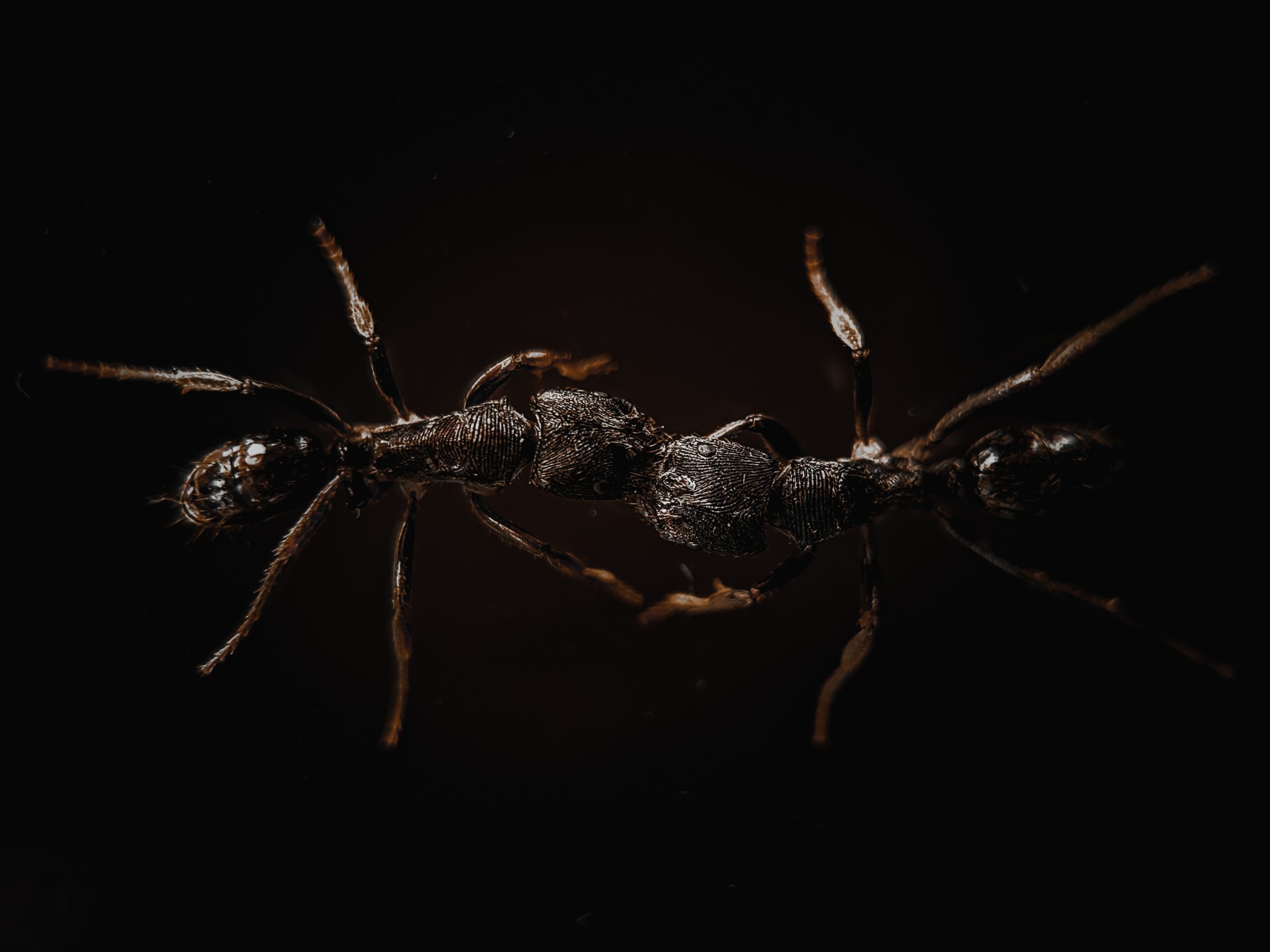
Two Dinoponera gigantea
This ant may not look large enough to be the biggest in the world, but compare it to the size of regular ants and it is easy to see that these ones are beasts. They are only found in South America, particularly in the lowland forests. True to every other ant species we know, the female workers are larger than the male drones and measure about 3 to 4 centimeters long. Another way to tell the difference between the two is their coloring; females are pitch black and males are dark red. Dinoponera gigantea live in the typical ant colonies with a queen that is responsible for growing its population every day. Their nests can have up to 8 different entrances — each one guarded by a strong worker — and are about 40 centimeters deep if the colony has lived there for a long time. However, these ant colonies can have more than one nest, so they may have a couple of medium-sized nests instead of one big nest. The workers forage for plants and small pests to feed the whole colony, and typically like to stay in the same general area. This can become a problem when they run into other Dinoponera gigantea, as these giant ants will fight for their right to forage by wrestling with their strong mandibles!
Roach – Megaloblatta longipennis
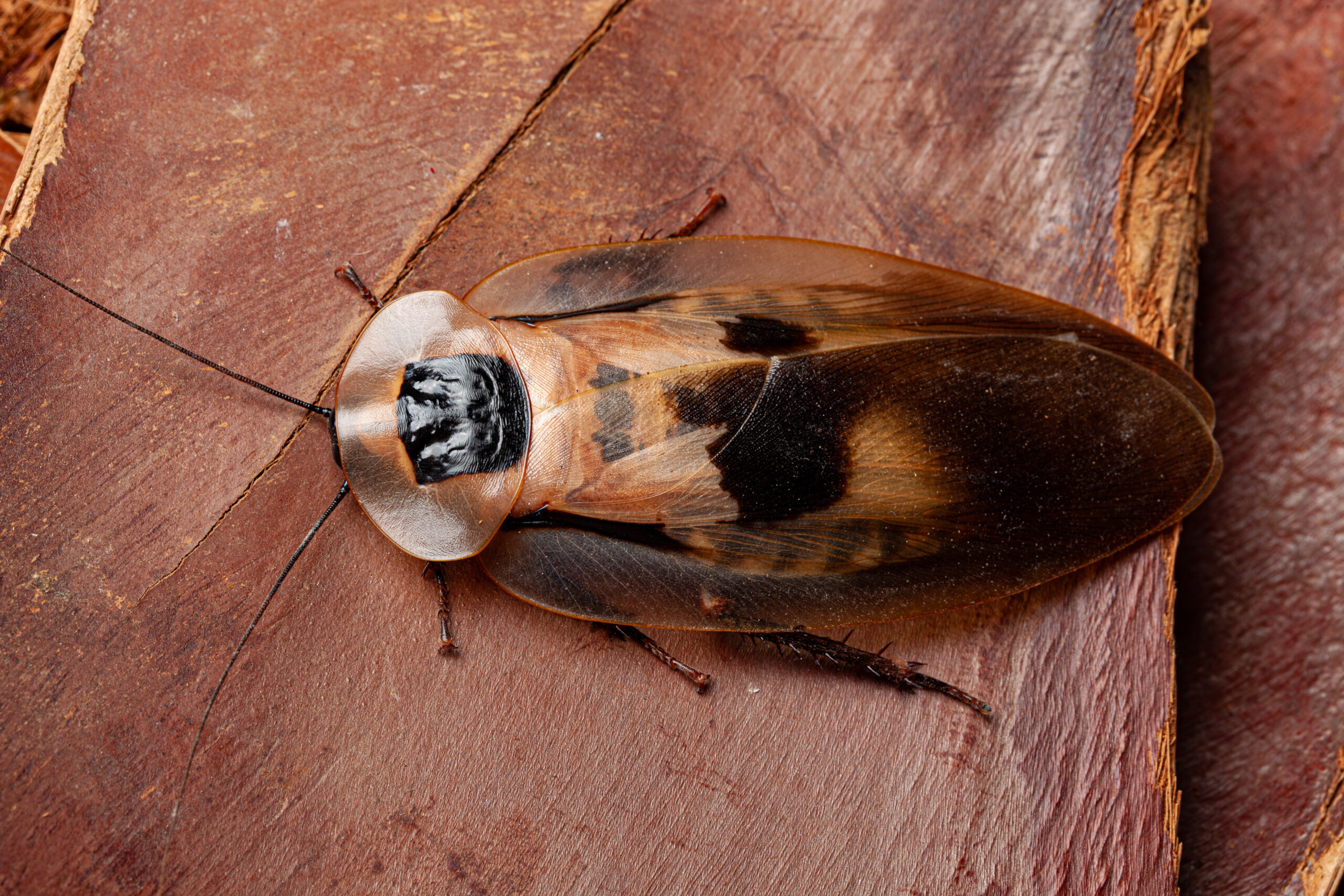
Megaloblatta longipennis
As if roaches were not nightmarish enough, there is a species that is almost the size of your hand. Megaloblatta longipennis are the largest winged roaches in the world, according to Guinness World Records. They can be up to 3.8 inches long and have a wingspan of 8 inches. Native to Central and South Americas, these roaches are commonly seen in Peru, Ecuador, and Panama. They are dark brown in color and have flat bodies that they can compress even more to fit into tight spaces, just like any roach. These cockroaches are nocturnal and prefer to live in damp, dark spaces, such as under longs and leaf litter. They do not like going inside homes or buildings (a big relief), since they cannot find any food that they like indoors. They live off of decaying plants and organic matter, which they can find plenty of in their habitats. Megaloblatta longipennis also lay their eggs in these dark places, and typically produce 16 to 50 eggs at a time. Considering the fact that they can have a lifespan of 10 years, these roaches are capable of outliving our most common roaches by a long shot. It does help roaches that they all come equipped with tough shells and multiple survival abilities, like breathing underwater and flying.
Wasp – Asian Giant Hornet
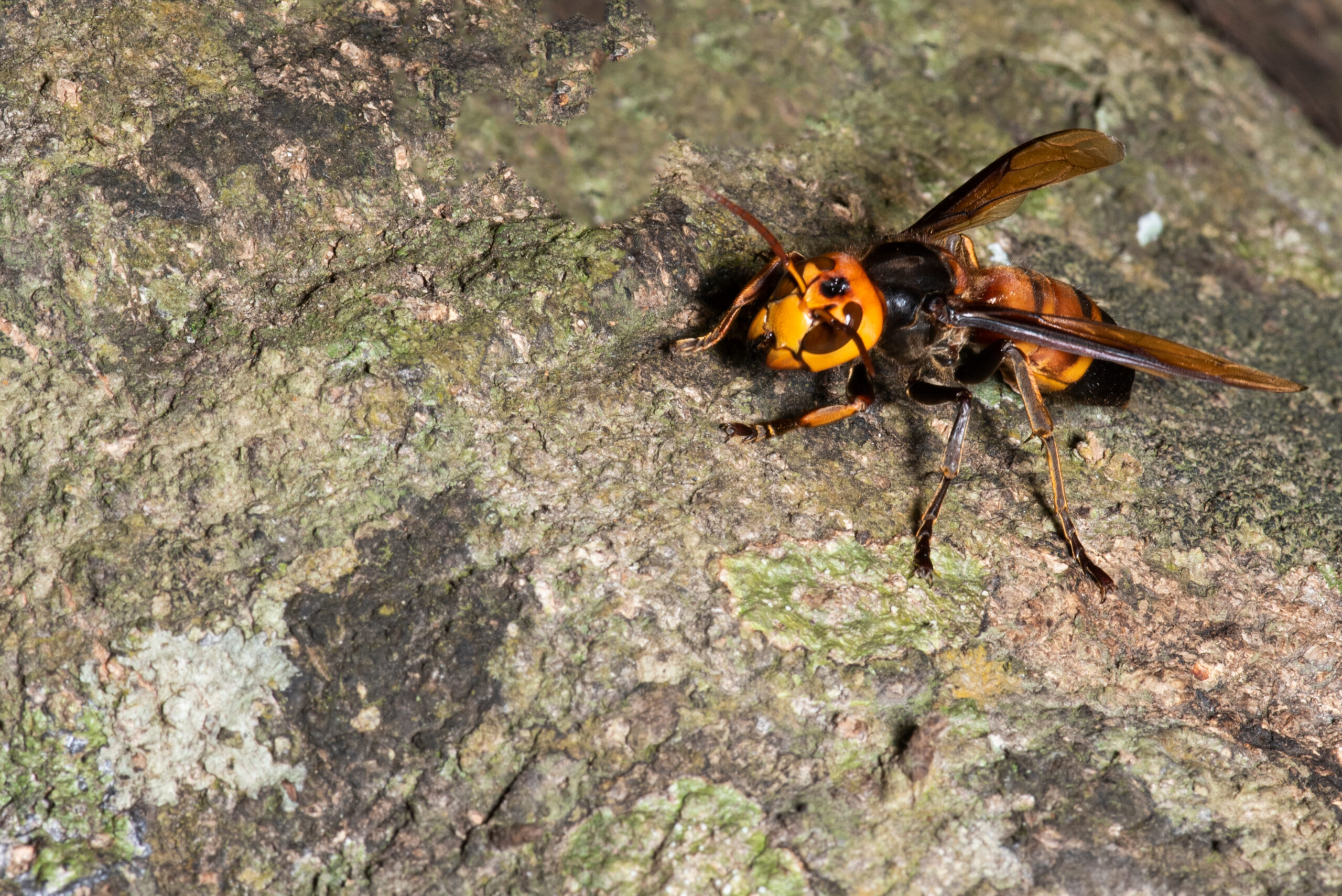
An Asian Giant Hornet
Yes, this is the Asian Giant Hornet we heard so much about in 2020. You may remember it by its nickname: the murder hornet. As many experts have since explained, this nickname is not entirely accurate. It is true that they can kill humans, as less than 40 people per year die from these stings. However, the real danger of Asian Giant Hornets is that they can wipe out honeybee colonies in no time. These hornets are about 1 to 2 inches long and have a wingspan of 3 inches, so they are noticeably larger than honeybees. They are black and orange in color and can live for up to 5 months, though they are most active from spring to fall. Asian Giant Hornets like dense woodland areas in high altitude areas, and are most common in East Asia and Japan. Like many wasps and hornets, this species is carnivorous. They will seek out honeybee colonies and hover outside the beehive, waiting to catch any bees entering or exiting. Some of the most aggressive ones will take the colony by force and kill the soldier bees at the entrance before moving on to the rest of the colony. Asian Giant Hornets can kill 40 bees a minute, so an entire colony is a piece of cake. They are even known to target weaker colonies to make it an easier process. This aggressive behavior is why Asian Giant Hornets are responsible for honeybee colony loss in certain areas, with France being the most notable.
Spider – Goliath Bird-Eating Tarantula
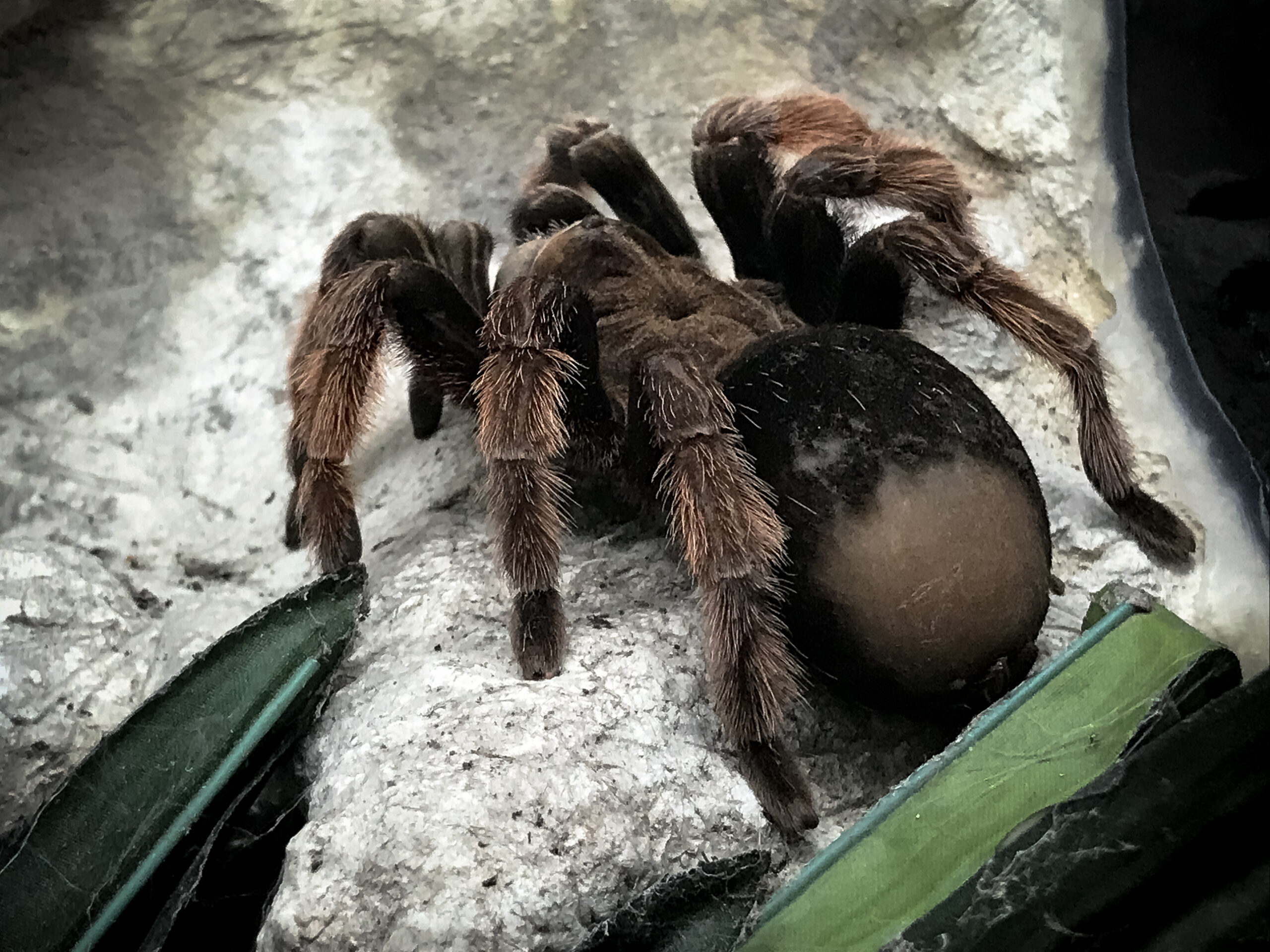
A Goliath bird-eating tarantula
If we had to select one ghastly creature from this list to be the ultimate nightmare, it would undoubtedly be the Goliath bird-eating tarantula. Between the name and the appearance of this unearthly spider, there is no doubt that this is the largest spider in the world. They can live for 10 years and produce up to 70 eggs in one sac, so Goliath bird-eating spiders are not currently in any danger of becoming endangered. They are found in the rainforests of South America and prefer to nest in underground burrows during the day. At night, these hunters emerge to find their next meal within the same rainforest. Since these tarantulas have an 11-inch-long leg span, they can track down and kill their prey without too much effort. The spiders incapacitate their prey in a chilling two-step process. They begin by killing the critter with a bite from their venomous fangs, then liquify their meal with digestive juices. Their most common targets include birds, frogs, and invertebrates. The countless hairs on the Goliath bird-eating spider are not just there for the intimidation factor. They can flick the barbed hair, or urticating hair, on their legs when they feel threatened into the face of their attacker. They also use these hairs to hiss as a warning beforehand, but we can’t think of one person who would ever willingly get close to the Goliath bird-eating tarantula.
Termite – Macrotermes bellicosus
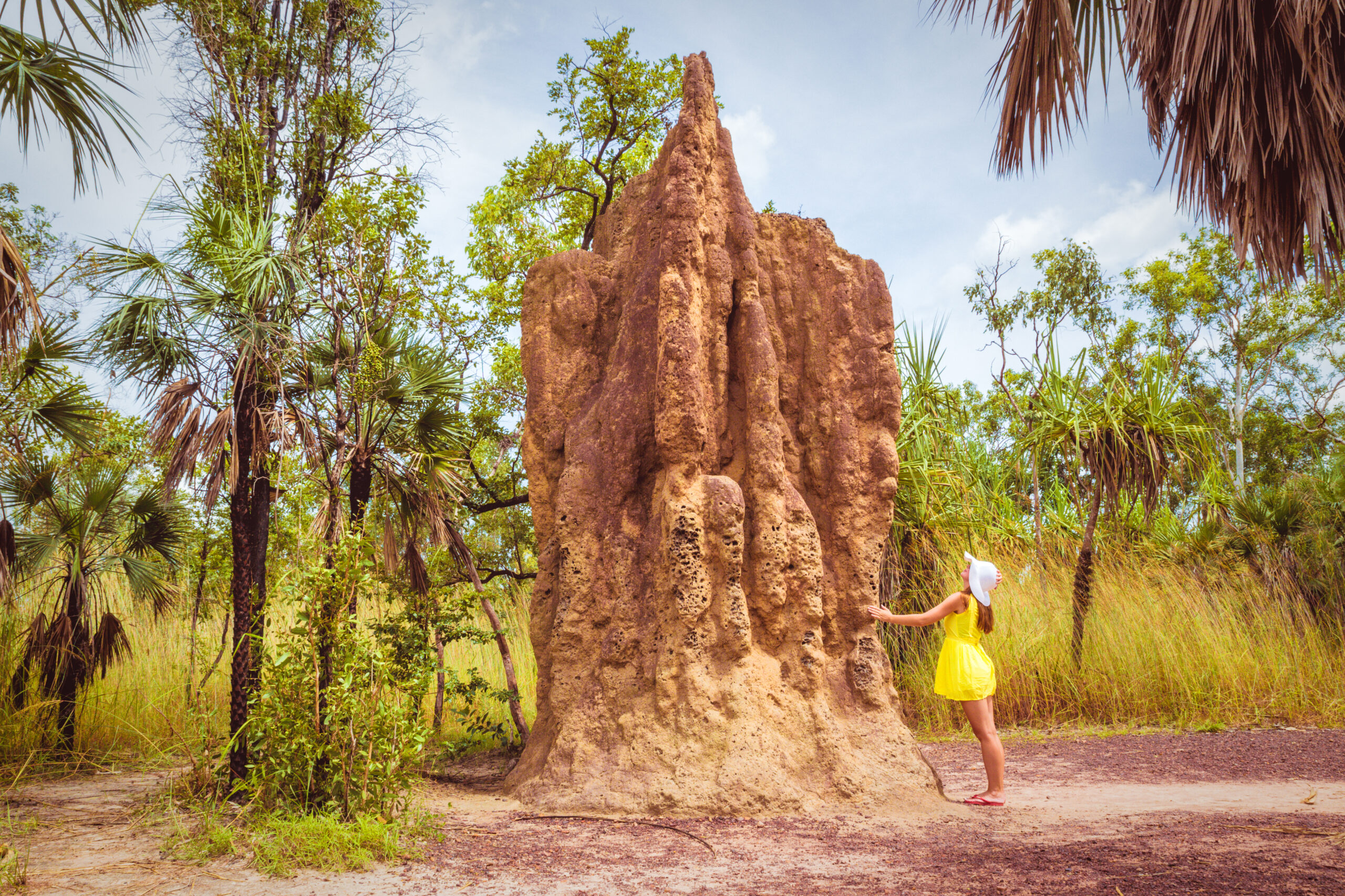
A giant termite mound
It seems strange to think of a large termite since the common U.S. species are all so small. Macrotermes bellicosus may not be the largest insect ever, but it is noticeably huge compared to an average termite. This species measures about 1.4 inches long, with the soldiers being a little larger. The queens are largest of all at 4.2 inches long, and their abdomens can expand to 10 millimeters wide when it is full of eggs. This species is most common in Africa, specifically in drained areas that have dead wood. They are known for their massive mounds that they call home, which they start building after the rain softens the hard dirt. The diameter of these mounds can be over 98 feet, so it is understandable how these major sites outlast the colonies that build them. The termites keep their unending energy supply up by feeding on the wood that they find deep underground in their digging. Macrotermes bellicosus has the traditional classes (or castes) of a termite colony, with a couple of features special to these mound-building termites. The soldiers guard the multiple entrances and attack any intruding critters with a toxic liquid that stops them in their tracks. Also, since the workers are larger than other termite workers, they are able to be even more productive in their nest-building. Their large mandibles and high energy levels make it possible for them to carve out winding tunnels, create various chambers, and build up a mound that you can see from yards away.
Cricket – Giant Weta
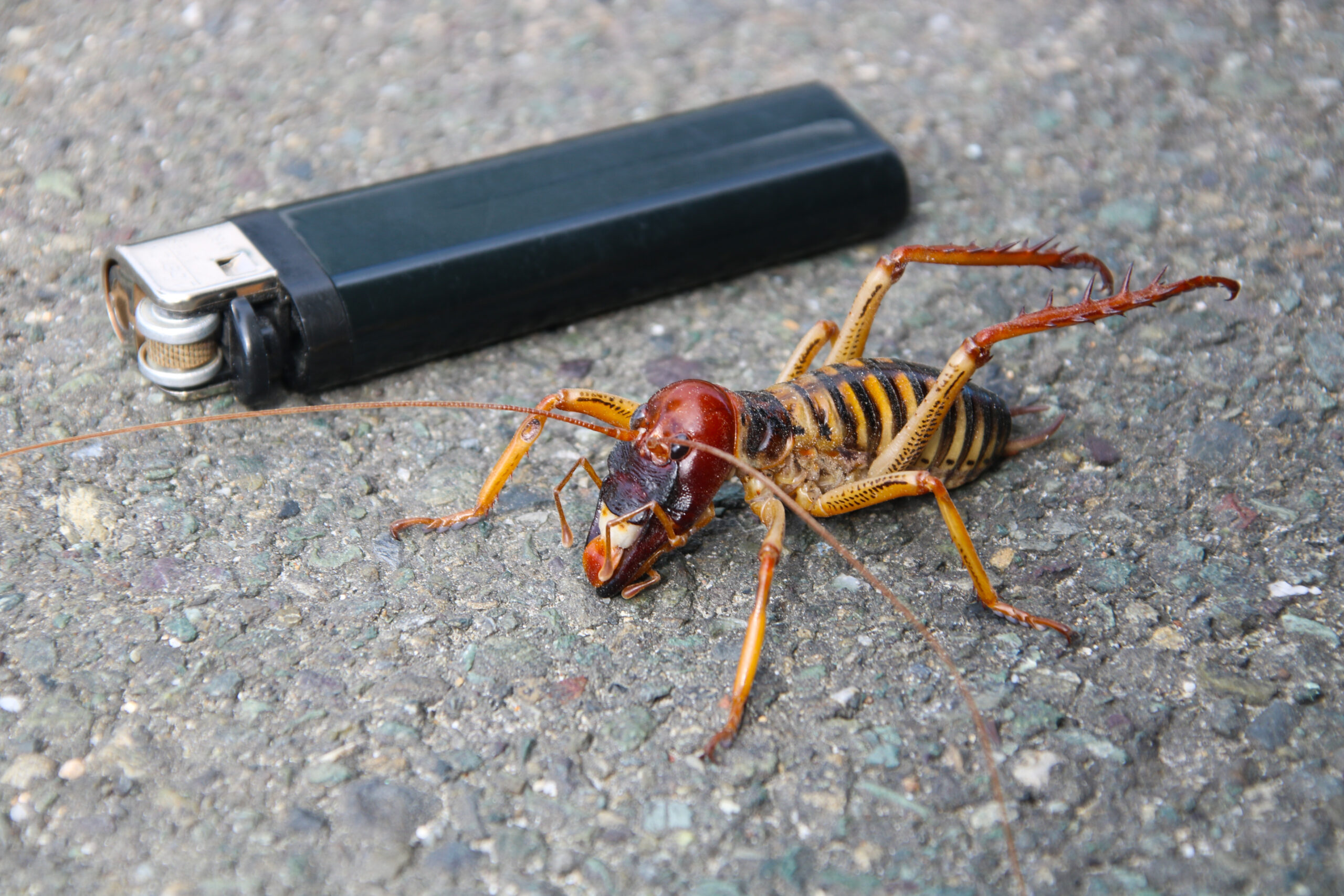
Giant weta with a lighter for size comparison
These massive crickets are blessedly one of those creatures that look monstrous but are completely docile. They are herbivores and will not bite humans, even if they are touched. The giant weta is considered the heaviest insect in the world, based on the fact that a studied female giant weta weighed a little more than 2.5 ounces. These crickets are 4 inches long without measuring their antennae or legs, so their length certainly aligns with their weight. They are also wingless and can’t jump due to their weight, so giant weta are pretty defenseless in the wild. This is likely why they are very endangered in New Zealand, their most populous place. Giant weta hide during the day and feed at night, when they are most likely to enjoy their favorite leaves and native plants in peace. One notable entomologist, Mark Moffett, even got the opportunity to feed a giant weta a full carrot! These crickets live for 6 to 9 months and can mate multiple times, so the main concern is ensuring that those eggs survive to hatch and eventually grow into adult giant weta. As creepy as they look, it is nice to know that there are some insects — giant though they may be — that are completely docile with curious humans.
Pointe Can Handle All Kinds of Pest Nightmares
Thankfully, none of these spine-chilling creatures are common in the U.S. at all, never mind in the most populated areas. They are all found in isolated areas of the rainforests and woodlands of the world, so we don’t have to worry about these giant creatures taking up space in our homes anytime soon. That being said, the typical pests we see in homes and businesses are no picnic either. All pests large and small cause us problems, such as food contamination and structural damage. Pest prevention and elimination is essential to maintaining a pest-free home in every season, and there is no one better-equipped for this responsibility than Pointe Pest Control. Our technicians are all highly-trained and experienced in the most efficient ways to solve any pest problem. All of our treatments are completely safe for humans and pets while still being fully effective against pests, so you don’t have to worry about toxic pesticides contaminating your home. We provide pest control in every season in order to stay on top of any pest problem that pops up along the way. For a free quote on the most reliable pest control services around, contact our team today!
Citations
Asian Giant Hornet. (2023, March 30). A-Z Animals. Retrieved August 21, 2023, from https://a-z-animals.com/animals/asian-giant-hornet/
Asian Giant Hornet. (n.d.). Texas A&M AgriLife Research. Retrieved August 21, 2023, from https://txbeeinspection.tamu.edu/asian-giant-hornet/
Boyle, A. (2011, December 1). World’s biggest bug? That depends… NBC News. Available at https://www.nbcnews.com/news/photo/worlds-biggest-bug-depends-flna1c8508042 (Accessed on August 21, 2023).
Dinoponera gigantea. (n.d.). Naturalist. Retrieved August 21, 2023, from https://www.inaturalist.org/taxa/487163-Dinoponera-gigantea
Discover 5 of the largest cockroaches (one could fill up your hands). (2023, February 22). A-Z Animals. Available at https://a-z-animals.com/blog/discover-5-of-the-largest-cockroaches-one-could-fill-up-you-hands/ (Accessed on August 21, 2023).
Giant weta | Heaviest insect. (n.d.). Cricket Flours. Retrieved August 21, 2023, from https://www.cricketflours.com/giant-weta/
Giant wētā/wētāpunga. (n.d.). New Zealand Department of Conservation. Retrieved August 21, 2023, from https://www.doc.govt.nz/nature/native-animals/invertebrates/weta/giant-weta-wetapunga/
Goliath bird-eating spider. (n.d.). San Diego Zoo Wildlife Explorers. Retrieved August 21, 2023, from https://sdzwildlifeexplorers.org/animals/goliath-bird-eating-spider
Goliath bird-eating tarantula. (n.d.). Smithsonian’s National Zoo & Conservation Biology Institute. Retrieved August 21, 2023, from https://nationalzoo.si.edu/animals/goliath-bird-eating-tarantula
Largest cockroach. (n.d.). Guinness World Records. Retrieved August 21, 2023, from https://www.guinnessworldrecords.com/world-records/largest-cockroach
Macrotermes bellicosus termites. (2023). Pests.org. Retrieved August 21, 2023, from https://www.pests.org/macrotermes-bellicosus-termites/
Request a Free Quote Today
(We do not share your data with anybody, and only use it for its intended purpose)


